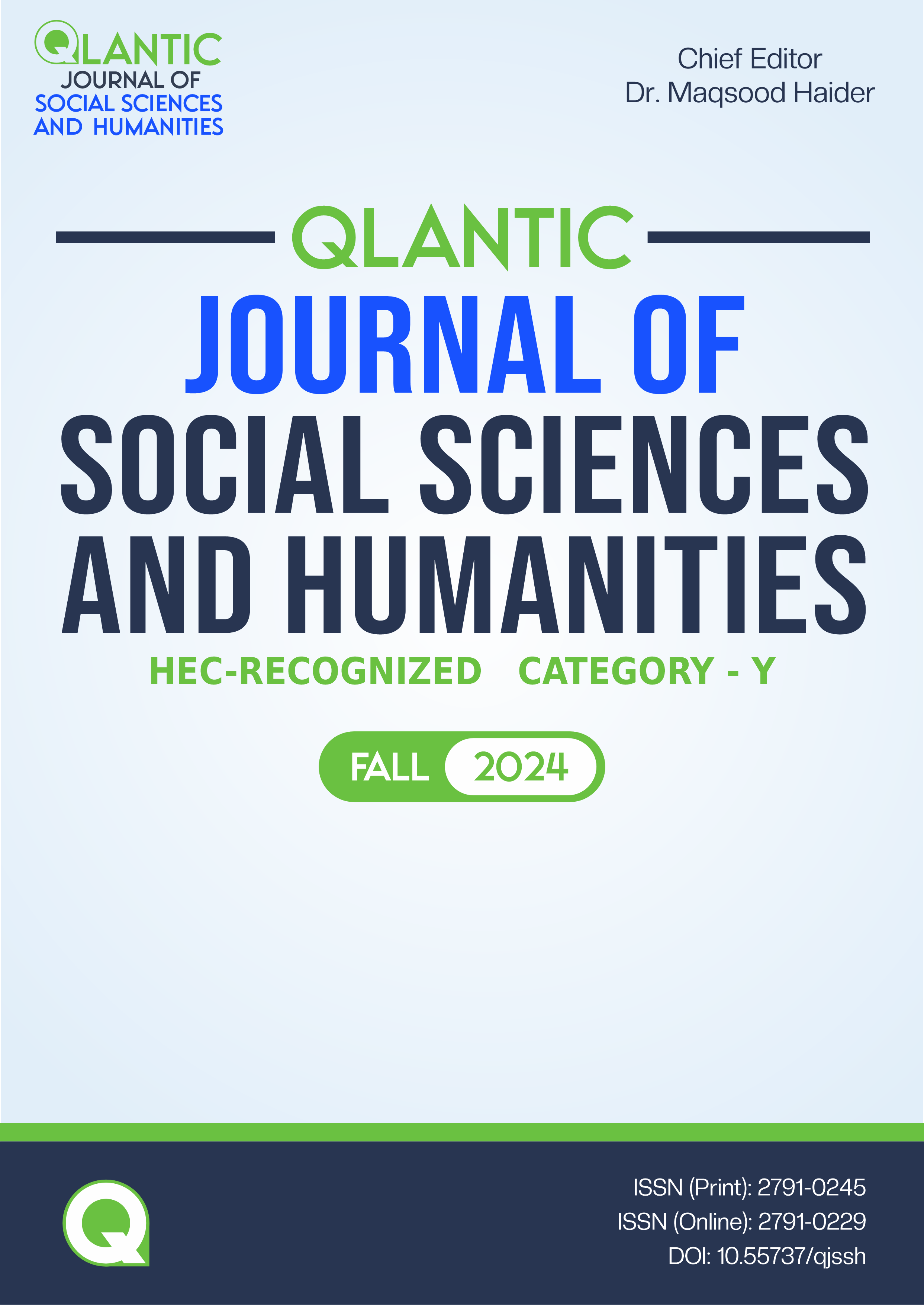A Multimodal Analysis of Graffiti: A Case Study of Government Schools in Punjab, Pakistan
DOI:
https://doi.org/10.55737/qjssh.972573133Keywords:
Graffiti, Multimodality, Ideology, Semiology, SDAAbstract
There have always been various modes of communication, and humans not only communicate verbally but non-verbally as well. Graffiti has been one of the effective means of communication. Different visual and verbal practices are employed in this type of communication. The present study decodes critically visual and verbal modes of communication used in graffiti. The data for the study in hand has been collected from government boys and girls schools in southern Punjab. The time span for data collection ranges from January to June 2023. The data has been analyzed by applying Fairclough’s (2003) model of Critical Discourse Analysis and Barthes's (1974) model of Semiological Discourse Analysis. The analysis of the data reveals that graffiti is one of the persuasive means of communication. Desired ideological messages could easily be conveyed to the target audience by employing this mode of communication. The percentage of graffiti discourses related to the promotion of female education in the collected data is higher (80%) as compared to data related to the promotion of education for male students (75%). This study contends that the element of change has been observed as far as the promotion of female education is concerned through graffiti of urban and rural schools for boys and girls.
References
Barthes, R. (1974). Mythologies. London: Paladin.
de Saussure, F. (1913). Cours de Linguistique generale. Paris: Payot.
Eco, U. (1976). The role of the reader. London: Hutchinson.
Fairclough, N. (1995). Media Discourse. Cambridge: Longman.
Fairclough, N. (2003). Analysing Discourse: Textual Analysis for Social Research. London: Routledge
Fairclough, N. (2003). Discourse and Social Change. Cambridge: Polity Press.
Fairclough, N. (2012). Language and Power. London: Longman.
Farooq, F., Sajid, M. A., & Maryam, F. (2021). Image of Muslim women and media Discursivity: A case study of the Washington Post’s discourses. Review of Applied Management and Social Sciences, 4(1), 123-129. https://doi.org/10.47067/ramss.v4i1.105
Foucault, M. (1972). The Archaeology of Knowledge. London: Tavistock Publication.
Hussain, N. (2019). Decoding the Religious Context of English Textbooks in Punjab and KPK. NUML. Islamabad Pakistan.
Jamil, M. J., Farooq, F., Sajid, M. A., & Shehzadi, K. (2021). Decoding religious contents: A CDA of PTB and OUP at primary level in Punjab, Pakistan. Pakistan Journal of Humanities and Social Sciences, 9(2), 134-140. https://doi.org/10.52131/pjhss.2021.0902.0120
Kress, G. (1989). Language processes in Sociocultural Practice. London: Oxford University Press.
Krueger, R. A. (2001). Designing and conducting focus group interviews. www.sph.umn.edu/img/assets/18528/FocGrp_Krueger_Oct02.pdf
Krueger, R. A. et al., (2000). Designing and Conducting Focus Group Interviews, Minesota. SAGE Publications.
Sajid, A (2012). Representations of Islam: A Study into the Discourse of Pakistan and the Western Newspapers. BZU. Multan Pakistan.
Van Dijk, T. A. (1998). Discourse as Structure and Process. London: Sage Publication.
Wodak, R. (Ed.). (2011). Language, Power and Ideology. Studies in political discourse. Amsterdam: Bejamins.
Downloads
Published
Issue
Section
License

This work is licensed under a Creative Commons Attribution-NonCommercial 4.0 International License.





